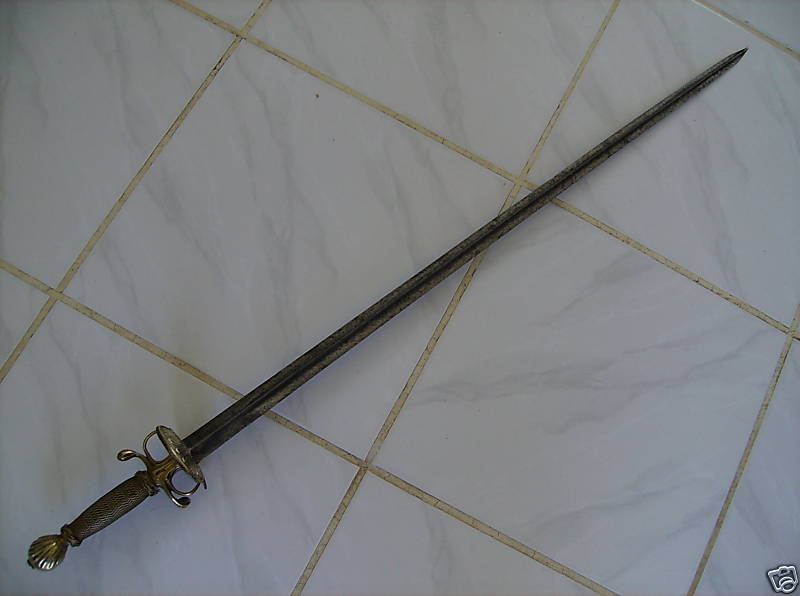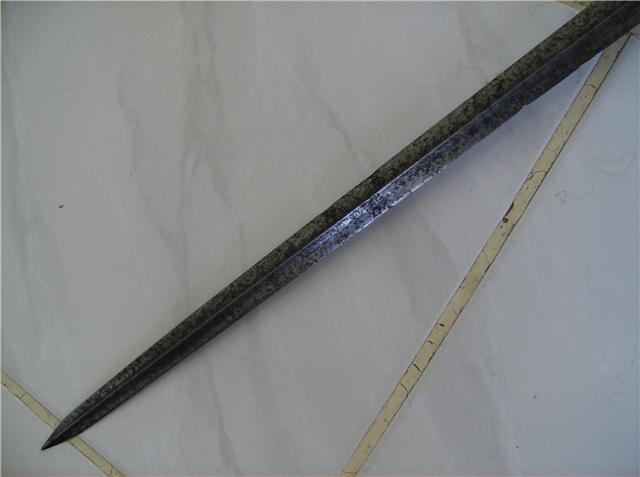I am a keen fan of the sword in the wallace collection A-459 and have even had a couple made for me. I also like the sword of Hhenry V. I was wondering :How practical would a hollow ground sword be in battle against armoured opponents ? I have seen some hollow grinds edge fold when the angle of attack for the cut was wrong. Cheap swords ?
My forger also hammers in most of the supposed hollow grind during the forge.
my regrets for my English
A blade with concave edge bevels, or hollow ground cross section can be very strong. Still, anything made by man can be destroyed by man. Swords break, armour dent and men die in war.
That hollow ground blades were practical, or functional in practical fighting, there should be no doubt.
Some original swords that I have seen have had very thin edges indeed. These were weapons made during the age of plate armour. That such edges would have folded on contact with steel armour did not prevent them being made. I do not think they were the result of mistake, but intentionally made so.
Swords have never been very good at defeating armour. Instead you want a blade that can reach behind or inbetween gaps. You can also aim for openings.
In the end, if you survive, but your sword gets nicks, you are still the winner of the fight.
One hollow ground section can be very different from another. The thickness of the spine, width of blade and radius of the hollow all plays a part in how much material is left or removed. Also of great importance is how much thickness is left in the very edge where the sharpness is shaped (normally with an apple seed section).
Of the many original blades with hollow ground section that I´ve seen many have rated in the highest level of quality.
That hollow ground blades were practical, or functional in practical fighting, there should be no doubt.
Some original swords that I have seen have had very thin edges indeed. These were weapons made during the age of plate armour. That such edges would have folded on contact with steel armour did not prevent them being made. I do not think they were the result of mistake, but intentionally made so.
Swords have never been very good at defeating armour. Instead you want a blade that can reach behind or inbetween gaps. You can also aim for openings.
In the end, if you survive, but your sword gets nicks, you are still the winner of the fight.
One hollow ground section can be very different from another. The thickness of the spine, width of blade and radius of the hollow all plays a part in how much material is left or removed. Also of great importance is how much thickness is left in the very edge where the sharpness is shaped (normally with an apple seed section).
Of the many original blades with hollow ground section that I´ve seen many have rated in the highest level of quality.
Thank you for your reply., I just wondered if there main wearing was more civil than military? A sword of choice for some and not for others on the battle field , like most things.
Thank you
Thank you
In the 18th cen, many officers carried hollowground blades with smallsword type hilts. And not just because they were staff officers who were not expecting to fight. Many line officers who marched in the field with a troop of infantry carried these type of weapons. They were broad enough to parry a heavier weapon and gave a very stiff thrust that would penetrate a heavy uniform coat. Here are some pics of one kind of military hollowground sword. It is very business-like.
 Attachment: 31.85 KB
Attachment: 31.85 KB

 Attachment: 29.6 KB
Attachment: 29.6 KB

 Attachment: 22.18 KB
Attachment: 22.18 KB

 Attachment: 21.63 KB
Attachment: 21.63 KB





An advantage of the hollow grind is that one can get a thicker spine in the center compared to a diamond cross section of the same mass. This can make a blade stiffer in thrusting than it would have been otherwise (comparable mass in a more thin lenticular cross section.) I envision the result as possibly more versatile if used judiciously; thrusting against plate, cutting against soft targets.
Page 1 of 1
You cannot post new topics in this forumYou cannot reply to topics in this forum
You cannot edit your posts in this forum
You cannot delete your posts in this forum
You cannot vote in polls in this forum
You cannot attach files in this forum
You can download files in this forum
All contents © Copyright 2003-2006 myArmoury.com — All rights reserved
Discussion forums powered by phpBB © The phpBB Group
Switch to the Full-featured Version of the forum
Discussion forums powered by phpBB © The phpBB Group
Switch to the Full-featured Version of the forum